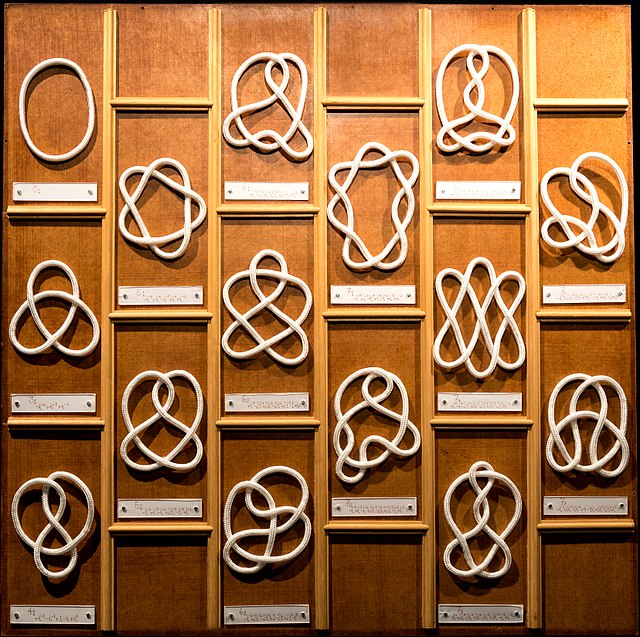In mathematical knot theory, a link is a collection of knots which do not intersect, but which may be linked together. A knot can be described as a link with one component. Links and knots are studied in a branch of mathematics called knot theory. Implicit in this definition is that there is a trivial reference link, usually called the unlink, but the word is also sometimes used in context where there is no notion of a trivial link.
The Hopf link is cobordant to the unlink.
In topology, knot theory is the study of mathematical knots. While inspired by knots which appear in daily life, such as those in shoelaces and rope, a mathematical knot differs in that the ends are joined so it cannot be undone, the simplest knot being a ring. In mathematical language, a knot is an embedding of a circle in 3-dimensional Euclidean space, . Two mathematical knots are equivalent if one can be transformed into the other via a deformation of upon itself ; these transformations correspond to manipulations of a knotted string that do not involve cutting it or passing it through itself.
Examples of different knots including the trivial knot (top left) and the trefoil knot (below it)
Intricate Celtic knotwork in the 1200-year-old Book of Kells
The first knot tabulator, Peter Guthrie Tait
A 3D print depicting the complement of the figure eight knot by François Guéritaud, Saul Schleimer, and Henry Segerman





